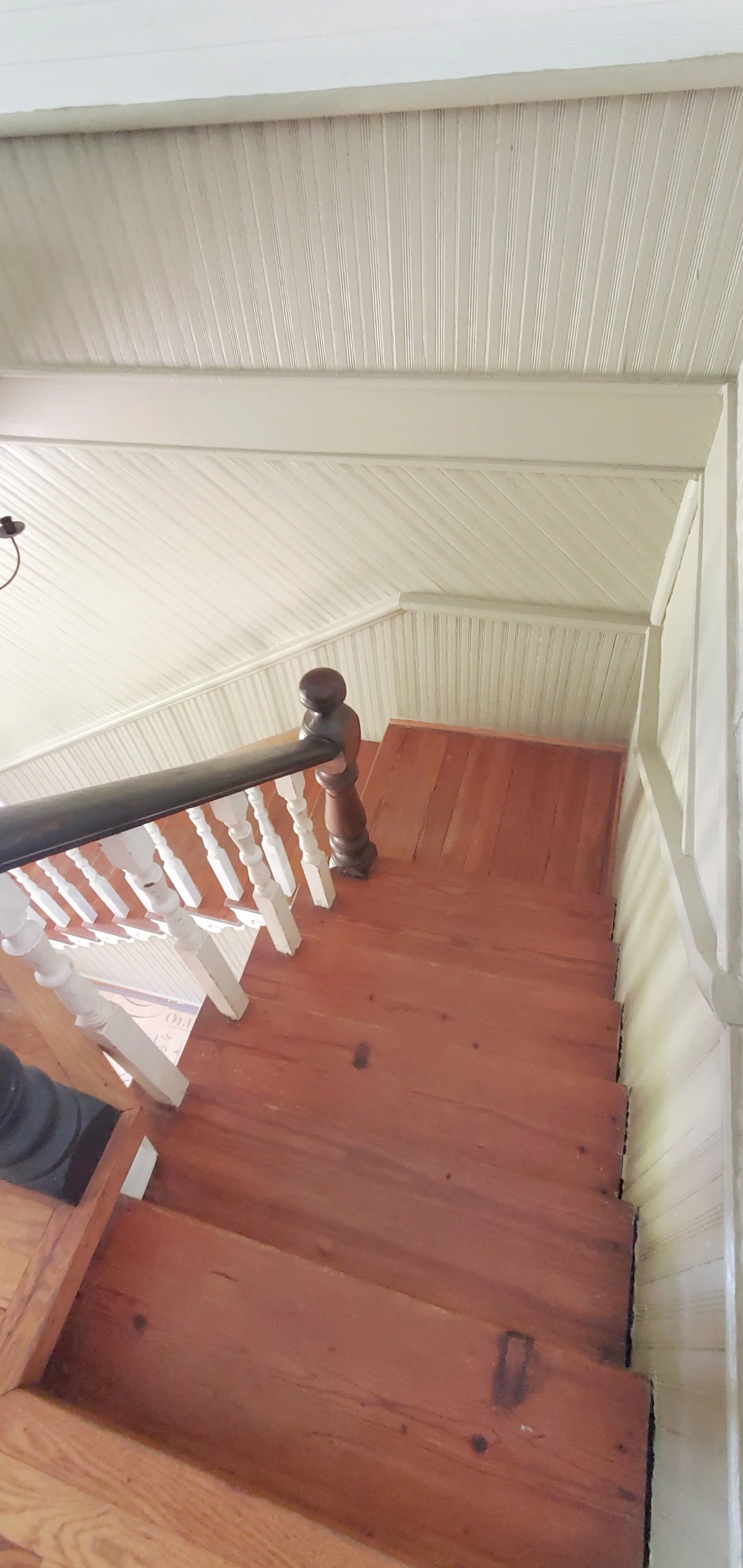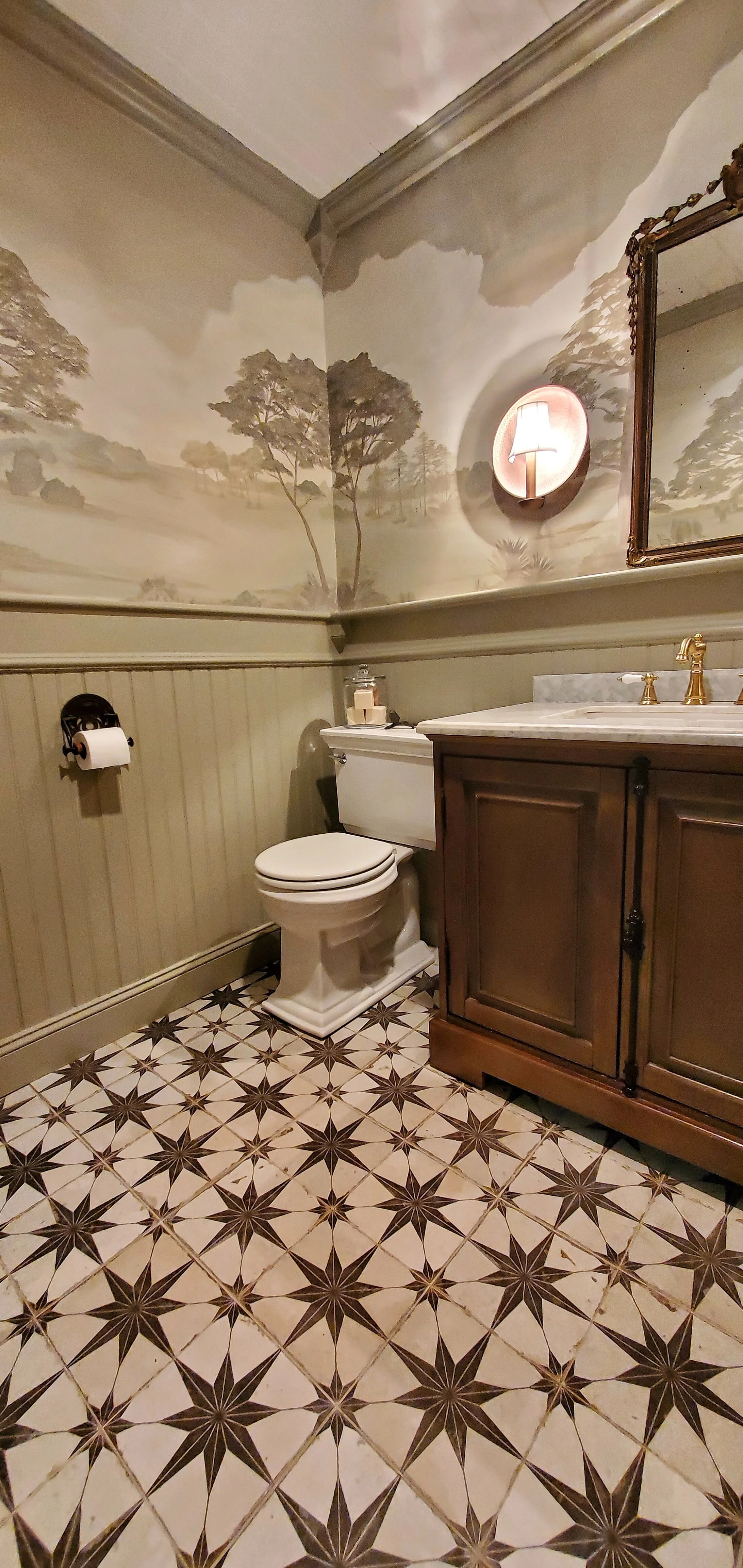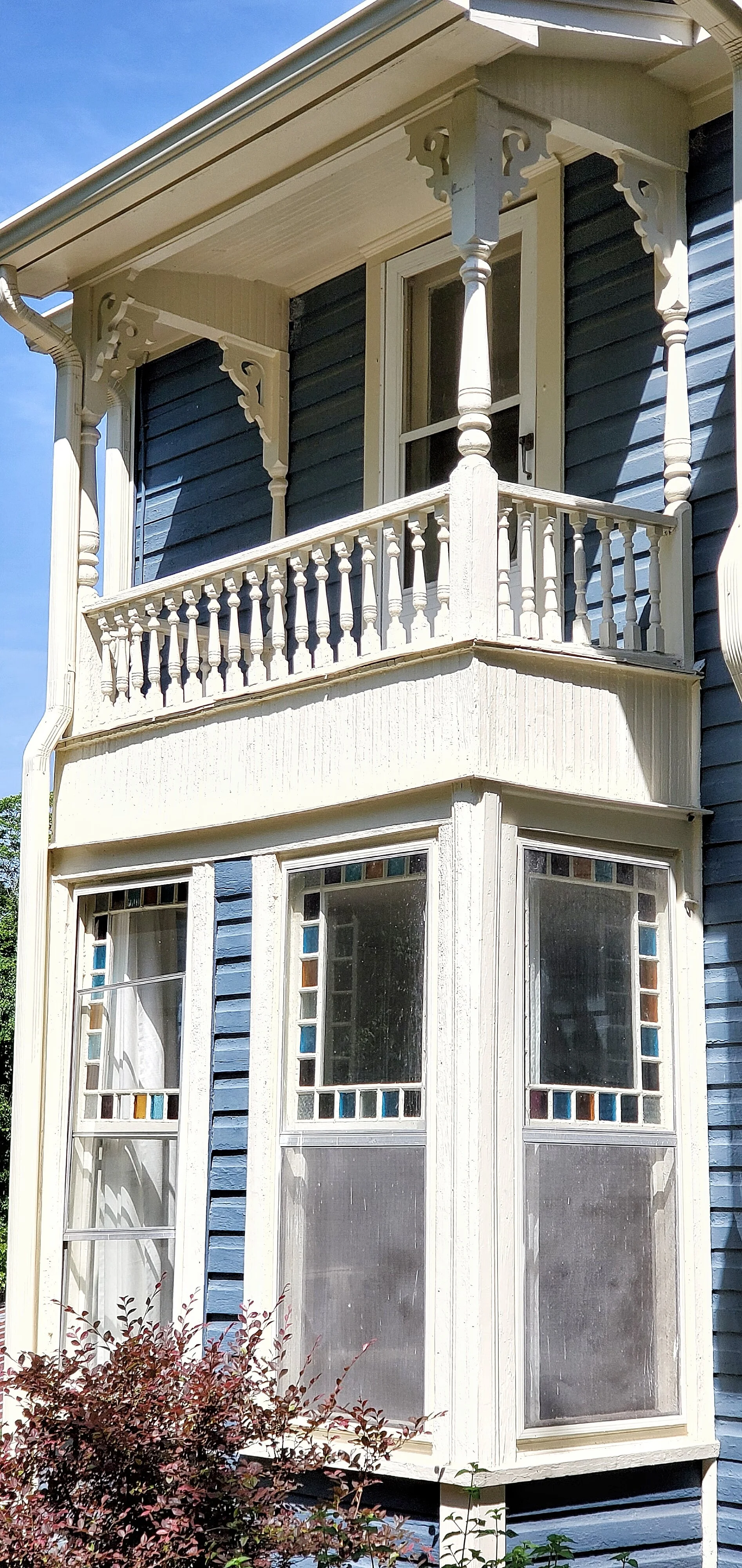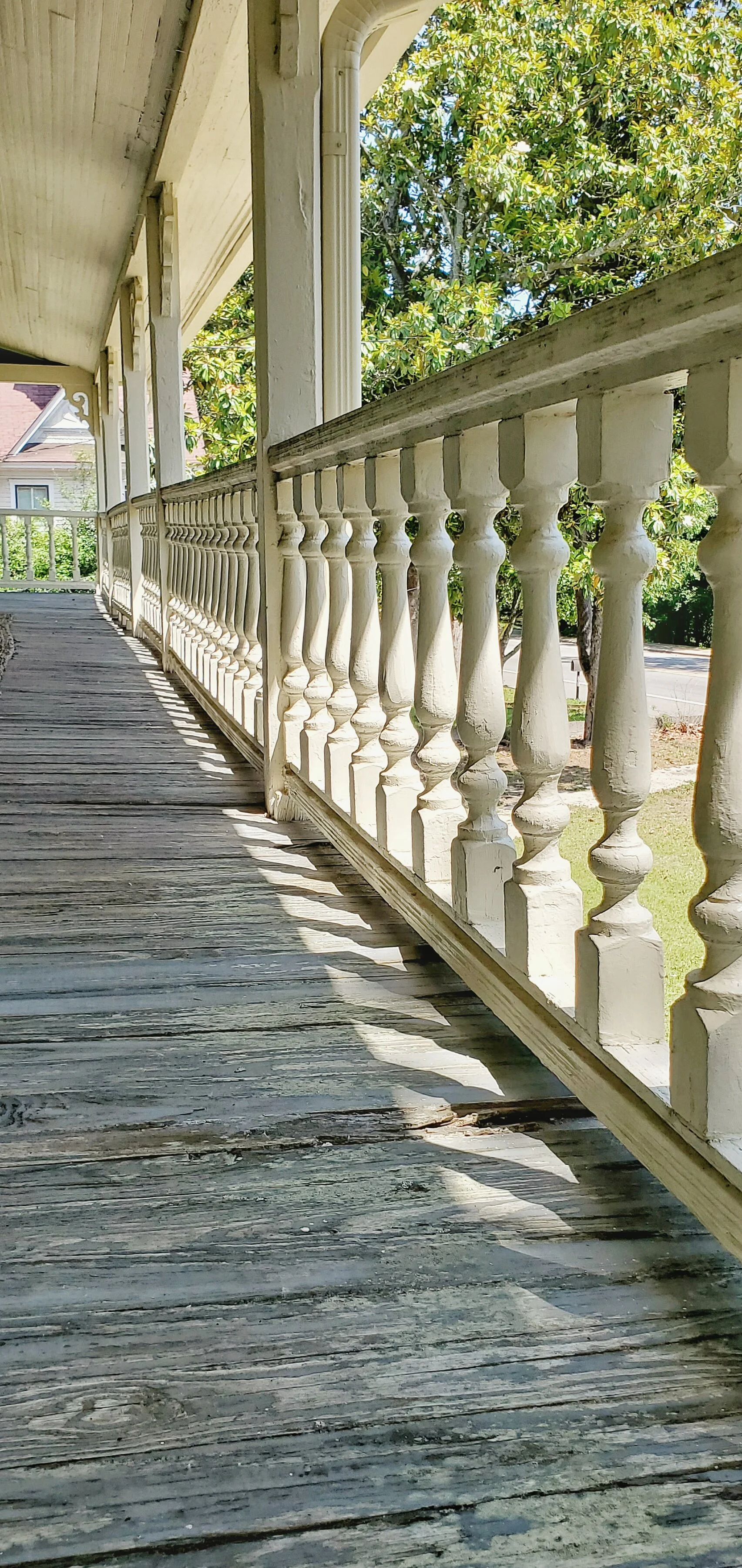The Waddell-Larkin House
A conversation with A Fine Folk House - Emily and Stephen Yopp, who are rehabilitating the Waddell-Larkin house, a 1880, c. 1927, c. 1930-1940 Folk Victorian in Carthage, NC
Tell us a little about yourself.
We are parents to a seven year old son, and four year old twin daughters. Stephen will be retiring after 20 years in the US Army in August and Emily has a Master's in Business Administration with a concentration in Project Management and has enjoyed owning two successful businesses selling antiques and offering upholstery services. We moved to Carthage in July 2018 to begin putting down "roots" and realize our dream of owning/rehabilitating an old home. We are avid DIYers and enjoy learning new skills in carpentry, furniture building, plumbing, electrical, landscaping, and upholstery.
How did you find the Waddell-Larkin house?
We have always dreamed of living in and rehabilitating an old house but, being a military family, we were never in one place long enough to commit to such a project. To indulge our dream of owning an old house I would often browse the local real estate listings and admire the older homes that I found. We moved back to North Carolina in 2016 after years of military moves and purchased a huge new construction home in the Anderson Creek area. As always, I began browsing the local old home listings and happened upon the historic Waddell-Larkin house on Realtor.com. We called our friend and Realtor, Amanda Martin. She took us on a tour of the home a few days later and we fell in love.
Why did you want to rehabilitate a historic home versus buying new?
We have lived in quite a few newer homes - in fact every home we ever bought prior to the Waddell-Larkin house was a new construction. The recurring theme we experienced with all of our new construction homes was lack of character and lack of quality work. I [Emily] am an avid early American antiques collector and have always been attracted to the pride and craftsmanship that these early pieces display. Over the years, as we learned more about the effort and care put into making such antique items, the more we began to see how poorly our new construction homes were made. Given our proclivity for early American furniture and wares we naturally began to gravitate toward "antique" homes as well. Their attention to craftsmanship, although rarely level or square, is a testament to just how important it was to build a home that would last generations. And so began our love affair with historic homes.
What challenges did you face when rehabilitating your home?
We have barely scratched the surface of our rehabilitation. The first major hurdle we had to overcome was financing our home and the work it needed. We chose to use the FHA 203k program to purchase and finance the construction. The process of applying for and getting through the loan was a long and arduous task. Interviewing and choosing a general contractor, we met with five, meeting deadlines, missing deadlines, maintaining the budget, and living an hour away during the four month construction were all challenges that we had never faced before, but we learned A LOT!
Even after the initial construction many areas of the home still need to be repaired. Our home has been "remuddled" more than once over the years and we often need to repair poor design choices, poor engineering tactics, and general neglect. There are areas of the foundation that have settled or suffered water and termite damage. Our kitchen slopes downhill, the c. 1930-1940 addition off the kitchen has a severely water damaged floor beam and the foundation of the c. 1927 addition is most likely going to have to be completely rebuilt. Just this year the roof, approximately 100 years old, began to leak in numerous places. It had to be removed and new wood and shingles installed. All of the windows will need to be repaired and floors repaired or replaced with era appropriate flooring. The list goes on and on. Rehabilitating our home will continue to be a challenge for our bank account, our free time, and at times our sanity but we are enjoying the process and are proud of the work we have done so far.
Staircase bead board work
Victorian replica half bathroom
Are there any features you had to replicate? What features did you have to update?
We are currently working on a small rehab project in the foyer where we have had to replicate the scrolled stair brackets. We will also have to replicate the scrolled brackets that were originally on the lower wraparound porch. There will be beadboard for the walls and ceilings that will need to be replicated as well; once we are able to move past the structural and "emergency" projects. As mentioned earlier, our house has been "remuddled" more than once and we are certain that many of the original details have been lost to the numerous home decor trends and neglect over the years, our first floor bathroom is a prime example. While it was installed sometime in the 1940s it was not designed in such a way to truly showcase the design tastes of that era. We chose to instead design the room to have a more Victorian feel and have since rehabilitated the room to include new "aged" tile floors that mimic the geometric designs often found in the Victorian era, a new shower, and beadboard wainscoting. We also used fluted door framing with wood rosette blocks and Victorian style crown molding and baseboard molding with corner blocks and plinth blocks to bring more of the Victorian style into the home. Because the bathroom is small and has no natural light of any kind I have painted a landscape mural in a grisaille-inspired style to make the room feel less confined and boxy.
Balcony woodwork and stained glass windows
Porch details
What is one piece of advice you would give someone wanting to rehabilitate a historic property?
Take a long, hard look at your lifestyle and budget before purchasing. Owning a historic house is NOT an HGTV segment where it only takes an hour for everyone to live happily ever after in their beautifully restored historic home. Unless you have hundreds of thousands of dollars to pour into a historic house it is important to realize and accept that you will be dedicating a huge portion of your life to the house. Your time, energy, thoughts, and money will all need to be turned toward the house. And the more neglected the house the more attention it will require of you. Sure, you will be able to carve out time for family and friends, but the reality is that when you purchase a historic home it needs to be with the commitment that you will do your best to bring it back to life and with respect to its history.
*some responses have been edited for clarity
You can follow Emily and Steve’s journey on Instagram at @afinefolkhouse







